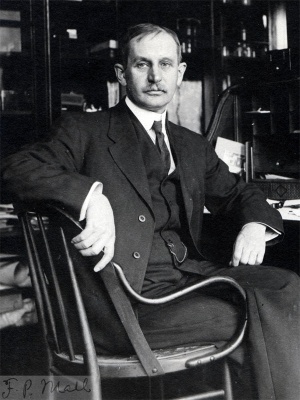Paper - The collection of human embryos at the Johns Hopkins University
| Embryology - 28 Apr 2024 |
|---|
| Google Translate - select your language from the list shown below (this will open a new external page) |
|
العربية | català | 中文 | 中國傳統的 | français | Deutsche | עִברִית | हिंदी | bahasa Indonesia | italiano | 日本語 | 한국어 | မြန်မာ | Pilipino | Polskie | português | ਪੰਜਾਬੀ ਦੇ | Română | русский | Español | Swahili | Svensk | ไทย | Türkçe | اردو | ייִדיש | Tiếng Việt These external translations are automated and may not be accurate. (More? About Translations) |
Mall FP. The collection of human embryos at the Johns Hopkins University. (1907) Anat. Rec. 1: 1 - 23.
| Historic Disclaimer - information about historic embryology pages |
|---|
| Pages where the terms "Historic" (textbooks, papers, people, recommendations) appear on this site, and sections within pages where this disclaimer appears, indicate that the content and scientific understanding are specific to the time of publication. This means that while some scientific descriptions are still accurate, the terminology and interpretation of the developmental mechanisms reflect the understanding at the time of original publication and those of the preceding periods, these terms, interpretations and recommendations may not reflect our current scientific understanding. (More? Embryology History | Historic Embryology Papers) |
The Collection Of Human Embryos At The Johns Hopkins University
During recent years many human ova and embryos have been sent to the Anatomical Laboratory and those which are especially valuable have been preserved and catalogued. This record of 379 numbers includes nearly all of the specimens less than three months old and the older ones which are accompanied with a history. Short notes which are of use in determining the age of the specimen or the cause of their abortion, together with many photographs and drawings, fill five large volumes and add much to the scientific value of the collection.
Ovor half of the embryos (230) were presented by physicians residing in Maryland; 34 specimens came from ISTew York; 25 from the District of Columbia; 23 from Massachusetts; 22 from Ohio; 13 from Pennsylvania; 8 from Iowa; 7 from Illinois; 5 each from Michigan, Maine, California, New Jersey, Tennessee and Missouri; and the rest from twelve other States and countries. A large number of embryos which were first sent were injured, through careless methods of preservation, but recently, since the ten per cent solution of formalin is used as a fixative, nearly all specimens arrive in excellent condition.
In the collection there are 96 normal specimens which are accompanied with the necessary data to determine their age. Such data are difficult to obtain, and it was often necessary to write a number of letters for them. If physicians would take greater pains to add the date of the last menstrual period as well as that of the abortion, to the embryos they send, a satisfactory time curve of growth, which is still wanting, could be constructed.
Among 407 specimens collected there are 156 which are pathological, that is 38 per cent. Of these there are 267 specimens less than three months old, among which there are 130 pathological (48 per cent). The percentage of those of the second month is exactly that of the whole niunber (38 per cent), while in the first month (108 specimens) it rises to 66 per cent.
All of the pathological embryos have been cut into serial sections and in many instances sections have been cut from the membranes. A study of them, which is in progress, indicates that in many instances the malformed embryos are caused by inflammatory and hemorrhagic changes in the chorion following uterine disease.
Unexpectedly, therefore, we have found that nature has made for us an experiment in human embryology, which may contribute much to the casual study of teratogenesis, a subject which has always been very perplexing.
Eighty-six normal embryos have been cut into serial sections, about half being in the transverse, and the rest in the sagittal and coronal planes. Most of the series are good and some are excellent. Arranged according to their age they number as follows :
| Age in weeks | 2, 3, 4, 5, 6, 7, 8, 9, 10, 11, 12, 13, 14. |
|---|---|
| Number of embryos | 1, 15, 14, 7, 12, 14, 6, 5, 2, 3, 4, 2, 1. |
- They have been stored and catalogued carefully and are constantly used here by students of human embryology. They are also being loaned to investigators in other laboratories.
Cite this page: Hill, M.A. (2024, April 28) Embryology Paper - The collection of human embryos at the Johns Hopkins University. Retrieved from https://embryology.med.unsw.edu.au/embryology/index.php/Paper_-_The_collection_of_human_embryos_at_the_Johns_Hopkins_University
- © Dr Mark Hill 2024, UNSW Embryology ISBN: 978 0 7334 2609 4 - UNSW CRICOS Provider Code No. 00098G

